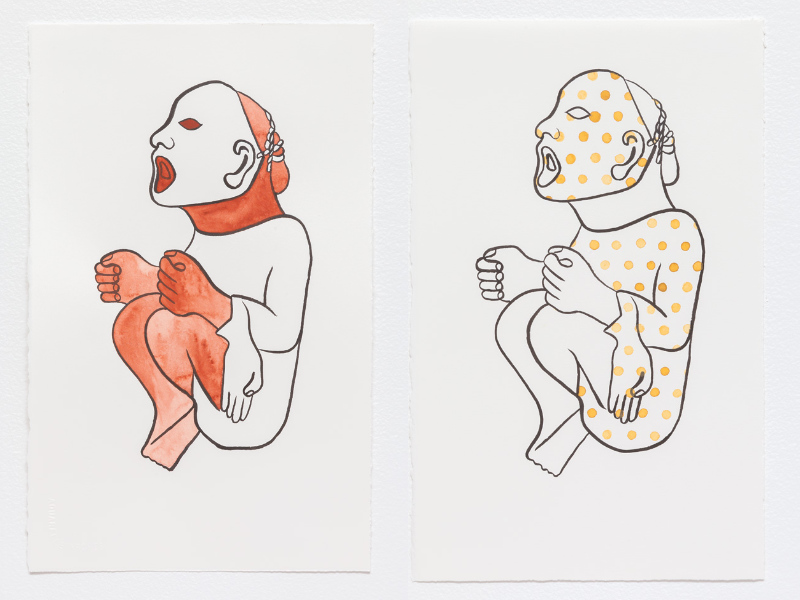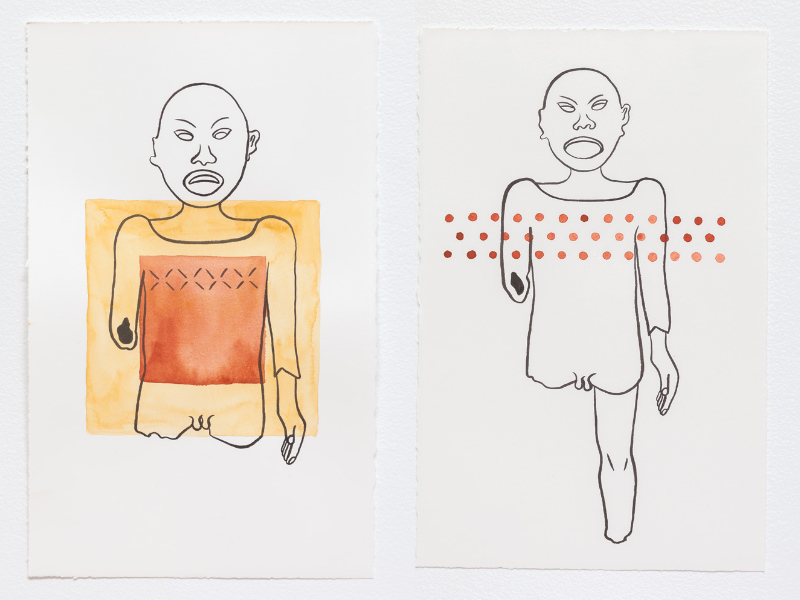go to exhibition
Ixiptla
The Nahua concept Ixiptla is composed of the roots xip (skin, covering) and ixtli (eyes, face, something on the surface of a conscious being). Ixiptla is an image, a representation, but it is also a presence or a skin. It can be thought of as a container or as the materialization of the power instilled in an object or person. This notion is present in the series of watercolors painted by Castillo Deball that evoke the deity Xipe Totec. This god is often represented as a man who wears the flayed skin of another, as a person would become the incarnation of the deity through this ritual ceremony.
During the colonial era, ixiptla was understood as referring to “religious images,” but we now know that this term includes all the ways in which energy is materialized in different forms, both human and non-human. These “embodiments” arise through processes associated with working with specific materials, which make possible this transfer of entities, such as deer skin and paper, which serve as a base and as ritual signifiers. Skin and paper seem to share the same nature, as a covering or packaging of plants, humans and animals, as well as a material and symbolic support for calendars or tonalamoxtli.
This notion has been taken up by Castillo Deball over the last decade, using it to think with images about objects and the technologies that produce them. This image allows us to think of an artifact as part of a particular history and context, yet recognizing its presence-agency.
Since 2013, Castillo Deball has edited Ixiptla, a magazine with no set periodicity, which unites many of the interests that run through her work, promoting an interdisciplinary perspective in the production of knowledge.




